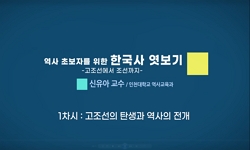본 연구는 조선왕조시대의 도리기에 관한 기존의 연구들이 정치적 문화적으로 크게 영향을 주고받았을 것으로 생각되는 중국의 도리기와의 비교 분석이라는 시각이 누락되고 있다는 점에 ...
http://chineseinput.net/에서 pinyin(병음)방식으로 중국어를 변환할 수 있습니다.
변환된 중국어를 복사하여 사용하시면 됩니다.
- 中文 을 입력하시려면 zhongwen을 입력하시고 space를누르시면됩니다.
- 北京 을 입력하시려면 beijing을 입력하시고 space를 누르시면 됩니다.

근세 한국과 중국의 道里記체계 비교연구 = Comparative study on the ‘Itinerary’ systems of modern Korea and China
한글로보기https://www.riss.kr/link?id=A109137495
-
저자
도도로키 히로시 (Ritsumeikan Asia Pacific University)
- 발행기관
- 학술지명
- 권호사항
-
발행연도
2024
-
작성언어
Korean
-
주제어
Dorigi Itinerary ; genealogy ; Joseon Dynasty ; “Dorogo” ; “Yitong Itinerary” ; 도리기 ; 계보 ; 조선왕조 ; 도로고 ; 일통노정도기
-
등재정보
KCI등재
-
자료형태
학술저널
-
수록면
5-24(20쪽)
- DOI식별코드
- 제공처
- 소장기관
-
0
상세조회 -
0
다운로드
부가정보
국문 초록 (Abstract)
본 연구는 조선왕조시대의 도리기에 관한 기존의 연구들이 정치적 문화적으로 크게 영향을 주고받았을 것으로 생각되는 중국의 도리기와의 비교 분석이라는 시각이 누락되고 있다는 점에 착안하였다. 비교를 통해 서로간의계보적 영향력 전파의 유무와, 내용에 나타나는 양자의 편찬목적과 이용실태의 차이, 아울러 내용에 투영된 양국의정치지리적 사회지리적 차이 등 세 가지를 축으로 분석하였다. 분석 대상은 조선왕조에서는 주된 도리기류인 『도로고』, 『동국문헌비고』 여지고 도리조, 조선광문회본 『도리표』, 김정호의 『대동지지』 등이며, 중국 쪽에서는 선행연구가 풍부한 명대의 『일통노정도기』와 청대의 『흠정대청회전사례』 역로조 등 두 서지이다. 그 결과, 경유지명의 선택과 표기, 이정 표시, 노선 분류 등 양자 간에 상당한 유사점이 확인되어, 계보적인 교류의 존재가 확실해 보였다.
한편 조선왕조 쪽 도리기에는 중국 쪽과 달리 상업 등 민간을 겨냥한 잡다한 정보가 없는 대신, 산천 등 자연지리적 정보와의 융합을 기초로 하는 등, 실용성과 함께 국가적 지리인식 표출을 중요시하는 경향이 확인되었다.
다국어 초록 (Multilingual Abstract)
This study focused on the fact that existing studies on Dorigi(道里記) Itinerary during the Joseon Dynasty are missing the perspective of comparative analysis with Chinese one, which is believed to have been greatly influenced politically and cultu...
This study focused on the fact that existing studies on Dorigi(道里記) Itinerary during the Joseon Dynasty are missing the perspective of comparative analysis with Chinese one, which is believed to have been greatly influenced politically and culturally each other. Through comparison, I have analyzed three axes: the presence of genealogical influence spread each other, the differences in the purposes and usage, and the geographic differences between the two countries. The subjects of analysis include major “Dorogo(道路考)”, Yeojigo Dorijo from “Dongguk Munheonbigo”(東国文献備考輿地考道里条), “Doripyo(道里表)”, and Kim Jeong-ho(金正浩)’s “Daedongjiji(大東地志)”, in Josen Korea, and two Chinese Dorigi Itineraries, one from Ming Dynasty and the other from Qing Dynasty. As a result, significant similarities between the two nations were confirmed in the selection and notation of place names, marking of transit points, and classification of routes, making the existence of genealogical exchanges each other seem certain. Meanwhile, unlike the Chinese side, the Joseon Dynasty's Dorigi did not contain miscellaneous information targeting the private sector such as commerce, but instead was based on the fusion of natural and human geographical information such as mountains and streams with reads, confirming a tendency to place more importance on expressing national geographical awareness than practicality.
동일학술지(권/호) 다른 논문
-
- 한국고지도연구학회
- 정대영
- 2024
- KCI등재
-
- 한국고지도연구학회
- 오윤주
- 2024
- KCI등재
-
- 한국고지도연구학회
- 정은주
- 2024
- KCI등재
-
1/5만 근대지형도에 수록된 山 지명의 특징과 활용의 문제점 - 일제강점기 인천․부천․시흥지역을 중심으로 -
- 한국고지도연구학회
- 한상호
- 2024
- KCI등재




 KCI
KCI 스콜라
스콜라







